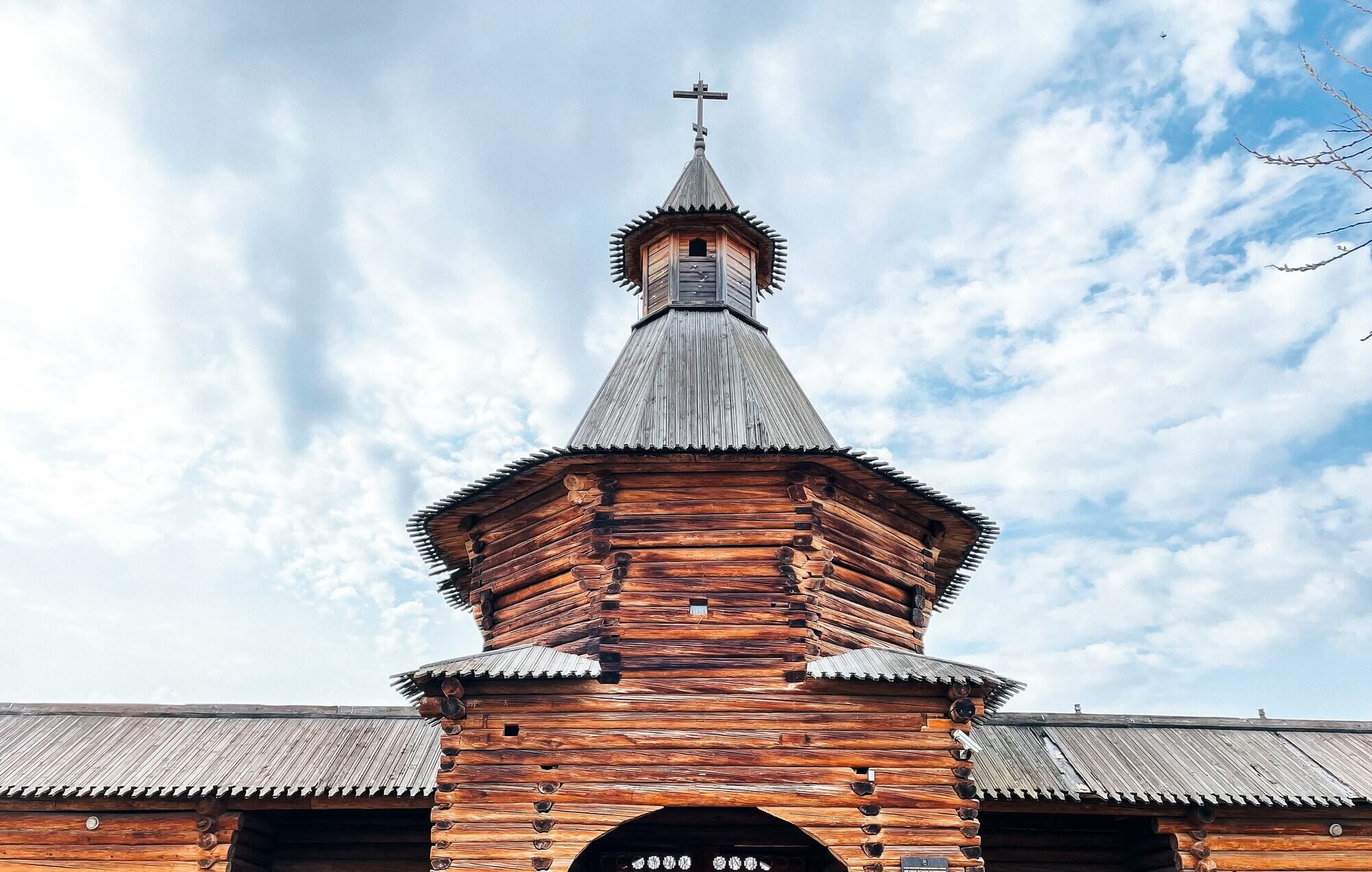
MUSEUM OF WOODEN ARCHITECTURE
Kolomenskoe houses the only museum of wooden architecture in Moscow. It comprises unique architectural sites brought here after scientific expeditions to Northern Russia and Siberia.
The idea to create such an open-air museum came to Peter Baranovsky after his travels around Northern Russia in the 1920s. Many of the wooden architectural sites he came across there were dilapidated and some on the brink of destruction. Thus for all of the sites transportation to Moscow meant surviving.
Learn more about the open-air museum history from our video and self-guided audio tour.
Today, the museum comprises five sites, all transported here from Northern Russia and Siberia, as a result of scientific expeditions.
- Wooden Church of Great Martyr St. George the Victorious
- Mokhovaya Tower of the Suma Stockaded Fort
- Passage Gate Tower of Nikolo-Korelsky Monastery
- Tower of Bratsk Stockaded Fort
- Mead Brewery
In the summer season, from 16 May to 1 October, you can visit thematic permanent exhibitions at the wooden St. George Church and Mokhovaya Tower of the Suma Stockaded Fort.
Though housing no exhibitions, the Passage Gate Tower of Nikolo-Korelsky Monastery, the Tower of Bratsk Stockaded Fort and the Mead Brewery can be of great interest as architectural sites: you can go round them taking a closer look at all the details.
WOODEN CHURCH OF GREAT MARTYR ST. GEORGE THE VICTORIOUS
The church was built in 1685, on the Yorga River bank in Arkhangelsk region (Northern Russia), at the local congregation expenses. In 2008, the church was disassembled and transported from the abandoned village to Moscow. In 2010, it was re-assembled on its present-day site. The church has two storeys. On the first storey there is a permanent exhibition telling its history, On the second one you can see XIX century wall paintings: the Holy Spirit in the dove shape and four Evangelists: Sts Mathew, Mark, Luke and John.
In 2023, the ‘Verenitsa’ foundation specializing in saving North Russian wooden architecture sites addressed the Kolomenskoe Museum-Reserve for cooperation. The foundation experts came to Kolomenskoe to make a photogrammetric survey and laser scanning of the church. The gathered data will help to study the restoration and repair techniques and apply them in restoring other sites. Today, the foundation takes care of more than 15 sites, including churches, chapels and a watchtower.
MOKHOVAYA TOWER OF THE SUMA STOCKADED FORT
The Mokhovaya Tower was one of the six towers of the Suma Stockaded Fort once situated on the White Sea coast lands owned by Solovetsky Monastery. The fort repelled numerous Swedish attacks and in 1613, stood a siege of the ‘Circass’, - remnants of the troops of False Dimitry II that came north – all without being ever taken.
The permanent exhibition that you can see inside describes the fort’s history in the XVI – XVIII centuries. On the first level, you can see everyday life items of the guardsmen who defended the fort. The display on the second level focuses on the military pages of its history. On the upper level, you will learn more on the entire North Russian forts system.
PASSAGE GATE TOWER OF NIKOLO-KORELSKY MONASTERY
In the 1920s, the monastery was closed and re-organized into a large shipbuilding plant. Of all its buildings, Peter Baranovsky managed to save just the passage gate tower.
The tower has been a favorite film-making location. You can notice it in Andrey Tarkovsky’s ‘Andrey Rublev’, the ‘Ruslan and Liudmila’ film version by Alexander Ptushko, the ‘Shadows Disappear at Noon’ series etc.
TOWER OF BRATSK STOCKADED FORT
As tradition has it, Protopope Avvakum, one of the leaders of Old Believers (the Orthodox group that opposed the XVII century church reforms introduced in Russia by Patriarch Nikon) was imprisoned in the tower for the winter of 1656-1657. The Bratsk Fort played an important part in exploration of Siberia and Far East.
In the 1950s-60s, when the site fell under the flooding area of the Bratsk water reservoir under construction, the surviving fort towers were to be transported. Today, you can see one of them in the Siberian ‘Angara Village’ museum open in Irkuts region, not far from the site itself, and the other one – at Kolomenskoe.
MEAD BREWERY
The late XVII – early XVIII century household structure known as Mead Brewery was discovered in 1927 at the closed St. Nicholas Common Faith Monastery in Moscow. Peter Baranovsky supposed that it had been built of the logs remaining from the ruined XVII century Preobrazhensky royal palace.